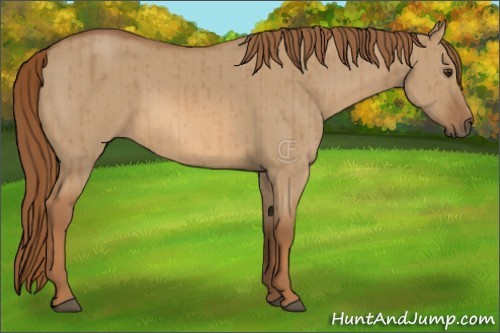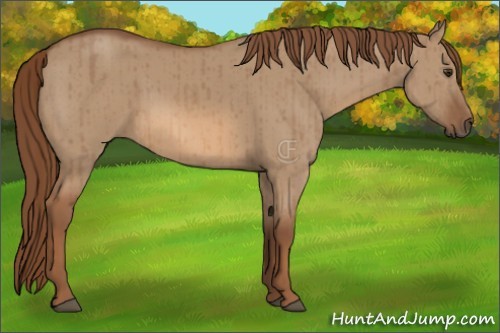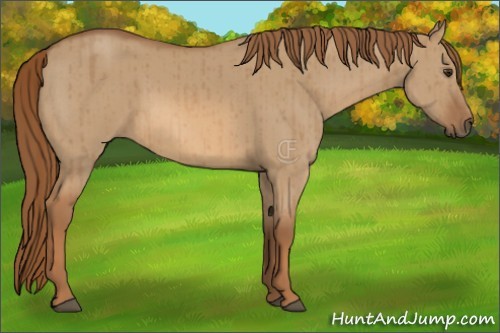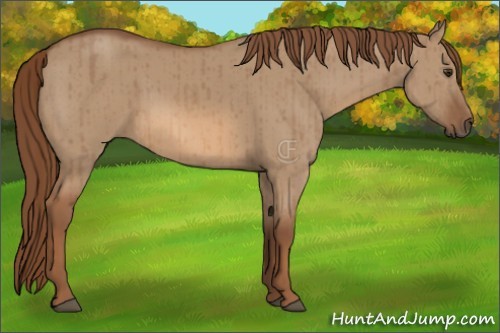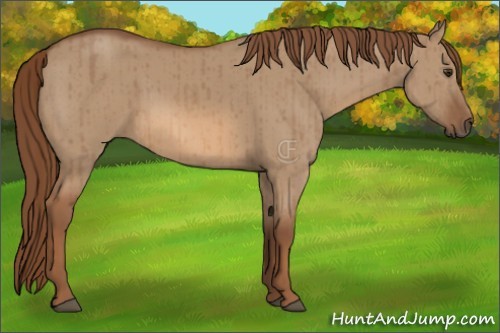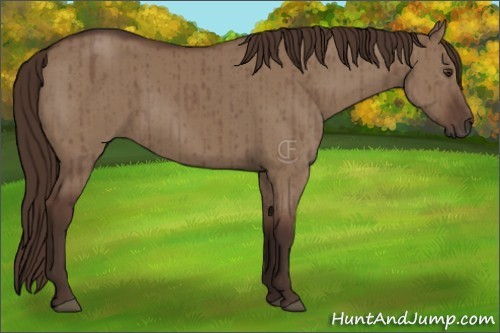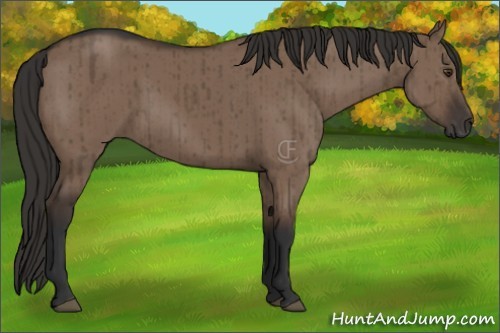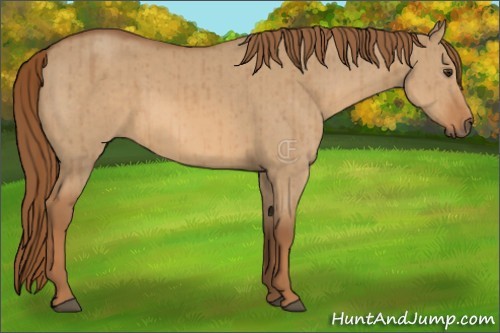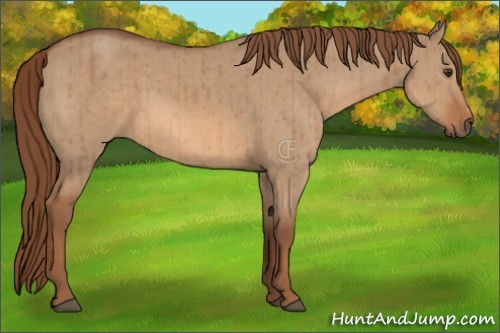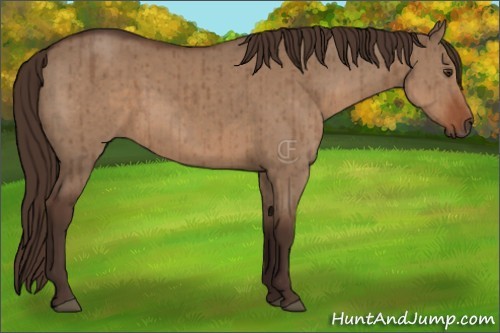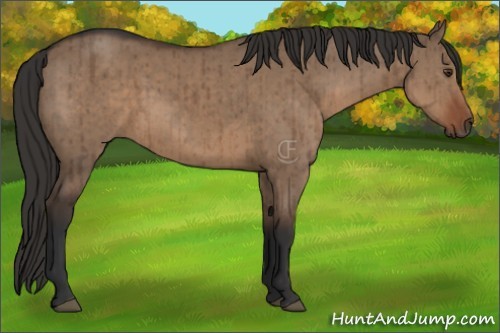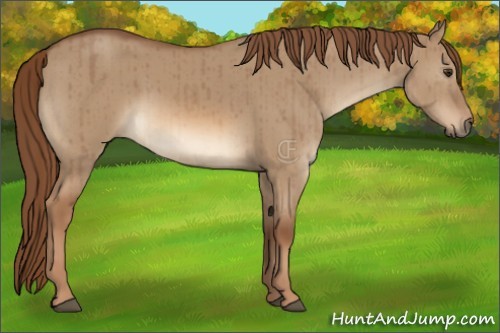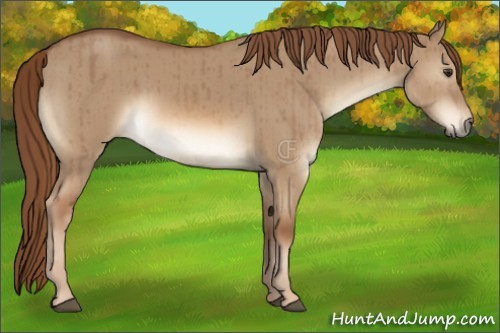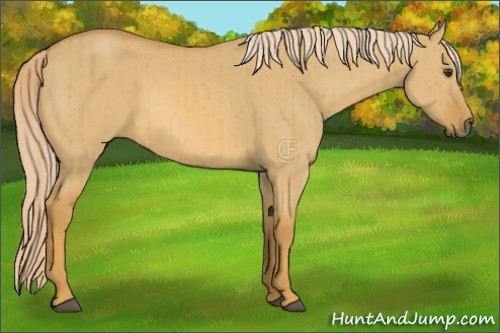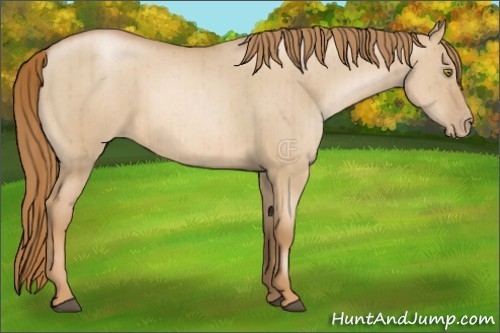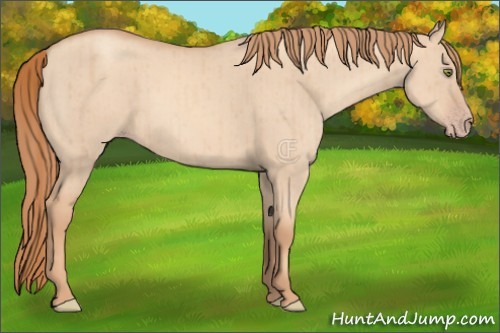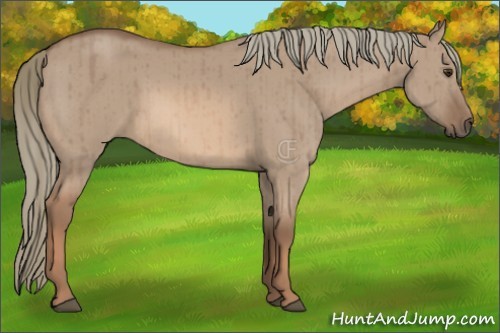Red Based Coats + DFP1
How Sooty and Dense Pheomelanin influence shade and expression of DFP1 on Red Based Coats.
Red Dun Brindle (e/e, A/A, D/-, DFP1/DFP1)
Looking at the chart below, as we add darkening genes like Sooty and Dense Pheomelanin, the horses coat becomes darker and the Dun Factor markings become more expressed.
Examples of Darkening Genes
|
no modifiers |
with Sty/- |
|
with Sty/Sty |
with DP/- |
|
with DP/DP |
with Sty/-, DP/- |
|
with Sty/Sty, DP/- |
with Sty/Sty, DP/DP |
Red Dun Brindle with Sooty Plus (S+)
Sooty Plus (S+) shifts around pigment to give a dappled look. This pigment shift, while darkening the horse, can distort the appearance of Dun Factor, in some colors making it almost invisible to see.
Red Dun Brindle with Pangare Plus (P+)
Pangare Plus (P+) lightens the soft points of a horse, covering up some of the expression of Dun Factor.
Red Dun Brindle with Dilution Genes
Diluting genes change the intensity of pigment on a horse. This weakens the expression of Dun Factor, and in some cases it can be invisible.


